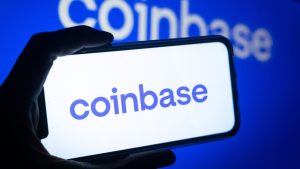
Web3 (or Web 3.0) will revolutionize the way we use the internet by incorporating decentralization via blockchain technology. Some believe it will change the internet the way bitcoin (BTC) and other cryptos have altered the financial paradigm. In order to understand Web3, it’s helpful to understand Web1 and Web2:
Web1 (or Web 1.0) is what we now call the internet’s early days. Web1 allowed you to consume internet content, but little else. Internet websites were static and non-interactive; you could merely send simple one-way messages or emails. Companies were starting to build their own web sites but largely as a glorified press release; it wasn’t a way to interact with the public.
In this way, you could compare Web1 with a physical newspaper. Composed of paper and ink, you are only a content consumer. There is no way to transparently see how popular an article is or who is reading it — and you can’t interact with fellow readers.
Web2 (or Web 2.0) is what most people simply think of as the current internet. Web2 is interactive and allows you to create your own content, comment and react to content, and interact with other users. This enabled the creation of social media networks and other interactive sites like Facebook, Twitter, Reddit, etc. Using our previous comparison, you could think of Web2 as our newspaper migrating to a website that allows you to interact in ways previously not possible.
Web3 is a response to concerns over personal data usage and internet privacy. In Web2, user data is largely controlled by major social media platforms, web browsers, and websites. Web3, conversely, is designed to be a more transparent and censorship-resistant version of the internet. More democratic than its Web2 predecessor, it puts people in control of both internet architecture and user data.
Using blockchain-based protocols in concert with AI,
Did you know?
Web3 is a decentralized version of the internet that allows users to own their own data.
Beyond that, Web3 embraces the crypto ethos and is designed to be permissionless (no centralized gatekeepers), trustless (no need to place trust in a third party), and open to all (little-to-no censorship of individuals/ideas).
NFTs and Web3
Non-fungible tokens (NFTs) have many blockchain characteristics that make them useful and integrable with Web3. As unique blockchain tokens, NFTs allow you to transparently provide proof of ownership for things such as digital art, music, data, in-game assets, personal records, and more.
Some social media platforms now feature NFT verification systems that allow you to use a crypto wallet to prove NFT ownership — and use it as your profile pic (PFP). Beyond that, NFTs permit you to control your digital identity and can also grant you membership and voting rights. For example, an NFT with voting rights could allow you to vote on where charity funds are directed, how a blockchain operates, or even change the characteristics of an NFT platform itself (such as which artists are featured and what fees are charged).
Did you know?
NFT use cases continue to expand; you can even use them to create Web3 website domains
.
When registering or selling a Web2 address such as “examplezyx.com,” you typically pay a third party to provide these services. Web2 uses a centralized database called the Domain Name Service (DNS). Decentralized Web3 domain options such as Crypto Name Service (CNS) and Ethereum Name Service (ENS) allow you to link your domain to a crypto wallet to accept cryptocurrency. You can even trade your Web3 domain on an NFT marketplace — much like any other NFT.
The increasingly deep intertwinement between NFTs and Web3 is expanding what is possible on the internet through the promises of decentralization. NFT and crypto usage on the internet will likely become ubiquitous to take advantage of the aforementioned possibilities — and the yet-to-be developed solutions that will make the Web2-to-Web3 transition even more dramatic than the migration from Web1 to Web2.















